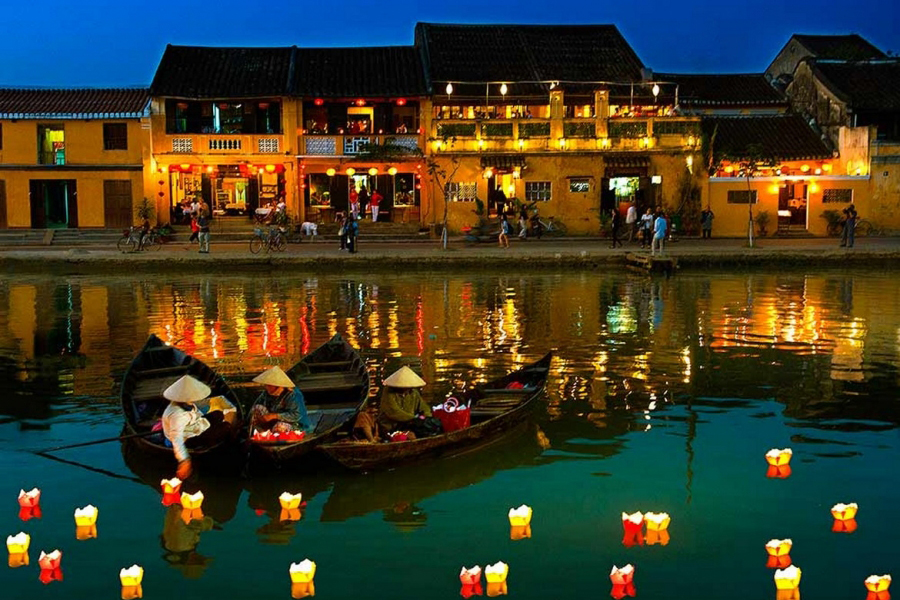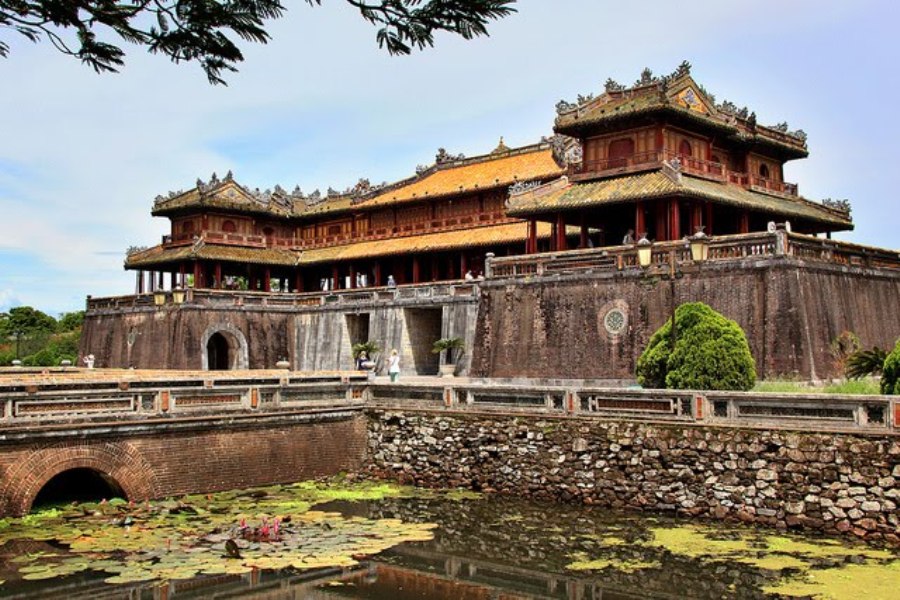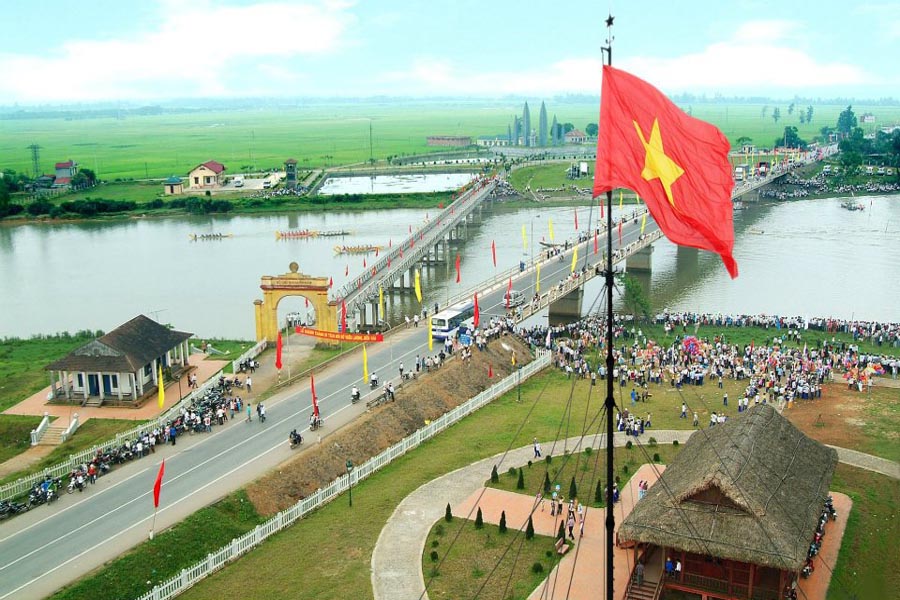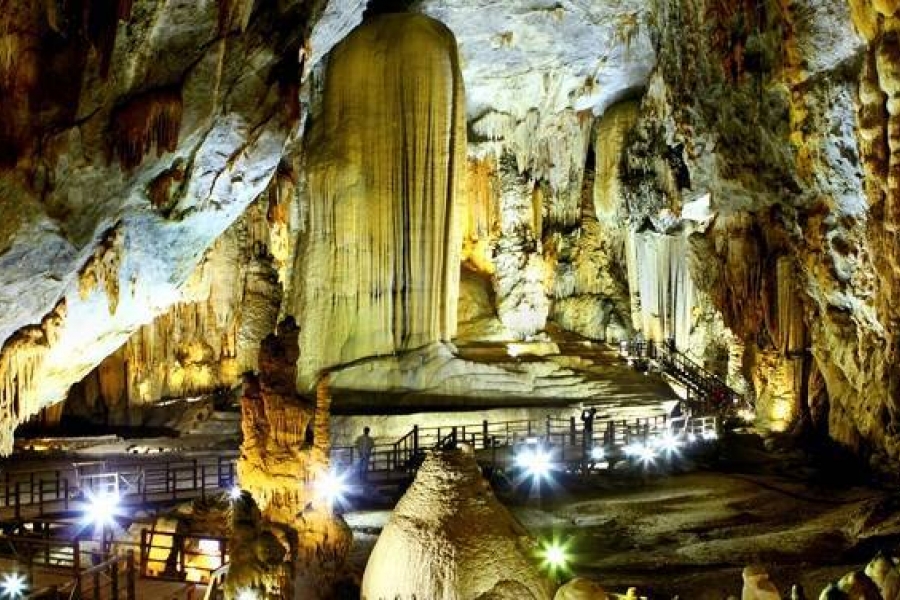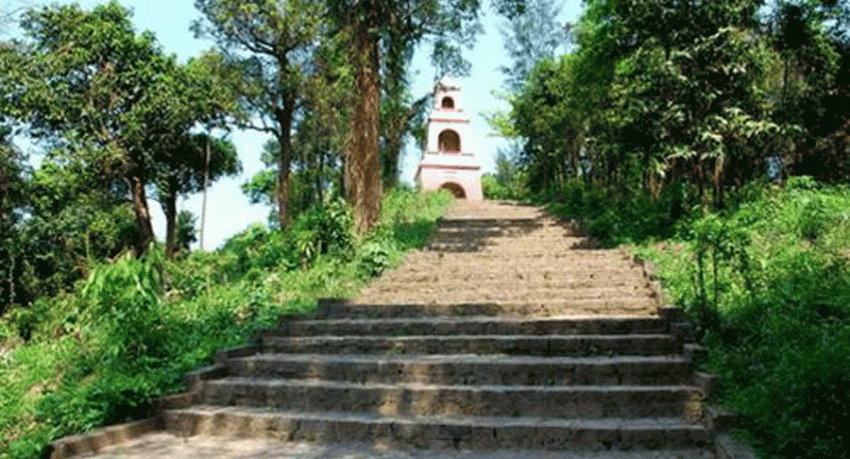Tuy Van Pagoda was erected on Tuy Van Hill, 30 kilometers south of hue, near Tu Hien estuary. Its is small hill between Cau Hai lagoon and the south China sea. In the 17th centy . Lord Nguyen Phuc Tan (1648 – 1687), on visiting the site was captivated by the beauty of the hill and the sea, and consequently had the pagoda constructed for the local people. It was originally named My Am Son. When Emperor Minh Mang cameto the estuary in 1826, he found the pagoda in ruins. He had it renovated renaming it Tuy Ba pagoda. In the 17th year of Minh Mang’s regin, the pagoda was again restored and more towers were erected. When Emperor Thieu Tri renovated the pagoda in 1841, he renamed it Thieu Tri. Thieu Tri had it in the list of the 20 most beautiful spots of the capital in the poem “Van son thang tich”. A stone stele was erected beside the pagoda. Succeeding Emperor also contribited to the maintenance of the pagoda and donated rice fields for its use.
On top of Tuy Van Hill stands the three-storey Dieu Ngu Thap tower. The main sanctuary of the pagoda is located halfway down the hill, and at the foot is large building used as accommodation for the monks,mthe pagoda was designed to be in harmony with the surrounding nature: hill, lagoon, and sea as an old saying goes:
Linh Thai and Tuy Van: Our nation’s beaty spots.
Despite the ravages of two wars, Tuy Van was fortunately able to preserve its Buddhist treasures, Buddha statues, and other objects of devotion, together with the stele and tower. Not far away to the east stands Linh Thai hill, looking like a turtle, adding to the beauty of the site.
Copyright by Phong Nha Pioneer Travel
Categories: Blog
